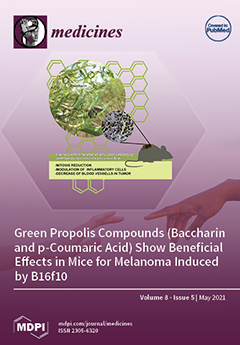Background: This study aimed to determine the rates of inpatient palliative care service use and assess the impact of palliative care service use on in-hospital treatments and resource utilization in hospital admissions for hepatorenal syndrome.
Methods: Using the National Inpatient Sample, hospital admissions
[...] Read more.
Background: This study aimed to determine the rates of inpatient palliative care service use and assess the impact of palliative care service use on in-hospital treatments and resource utilization in hospital admissions for hepatorenal syndrome.
Methods: Using the National Inpatient Sample, hospital admissions with a primary diagnosis of hepatorenal syndrome were identified from 2003 through 2014. The primary outcome of interest was the temporal trend and predictors of inpatient palliative care service use. Logistic and linear regression was performed to assess the impact of inpatient palliative care service on in-hospital treatments and resource use.
Results: Of 5571 hospital admissions for hepatorenal syndrome, palliative care services were used in 748 (13.4%) admissions. There was an increasing trend in the rate of palliative care service use, from 3.3% in 2003 to 21.1% in 2014 (
p < 0.001). Older age, more recent year of hospitalization, acute liver failure, alcoholic cirrhosis, and hepatocellular carcinoma were predictive of increased palliative care service use, whereas race other than Caucasian, African American, and Hispanic and chronic kidney disease were predictive of decreased palliative care service use. Although hospital admission with palliative care service use had higher mortality, palliative care service was associated with lower use of invasive mechanical ventilation, blood product transfusion, paracentesis, renal replacement, vasopressor but higher DNR status. Palliative care services reduced mean length of hospital stay and hospitalization cost.
Conclusion: Although there was a substantial increase in the use of palliative care service in hospitalizations for hepatorenal syndrome, inpatient palliative care service was still underutilized. The use of palliative care service was associated with reduced resource use.
Full article




